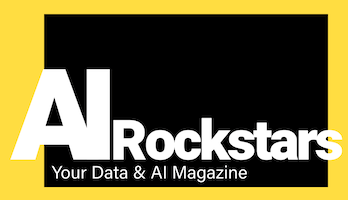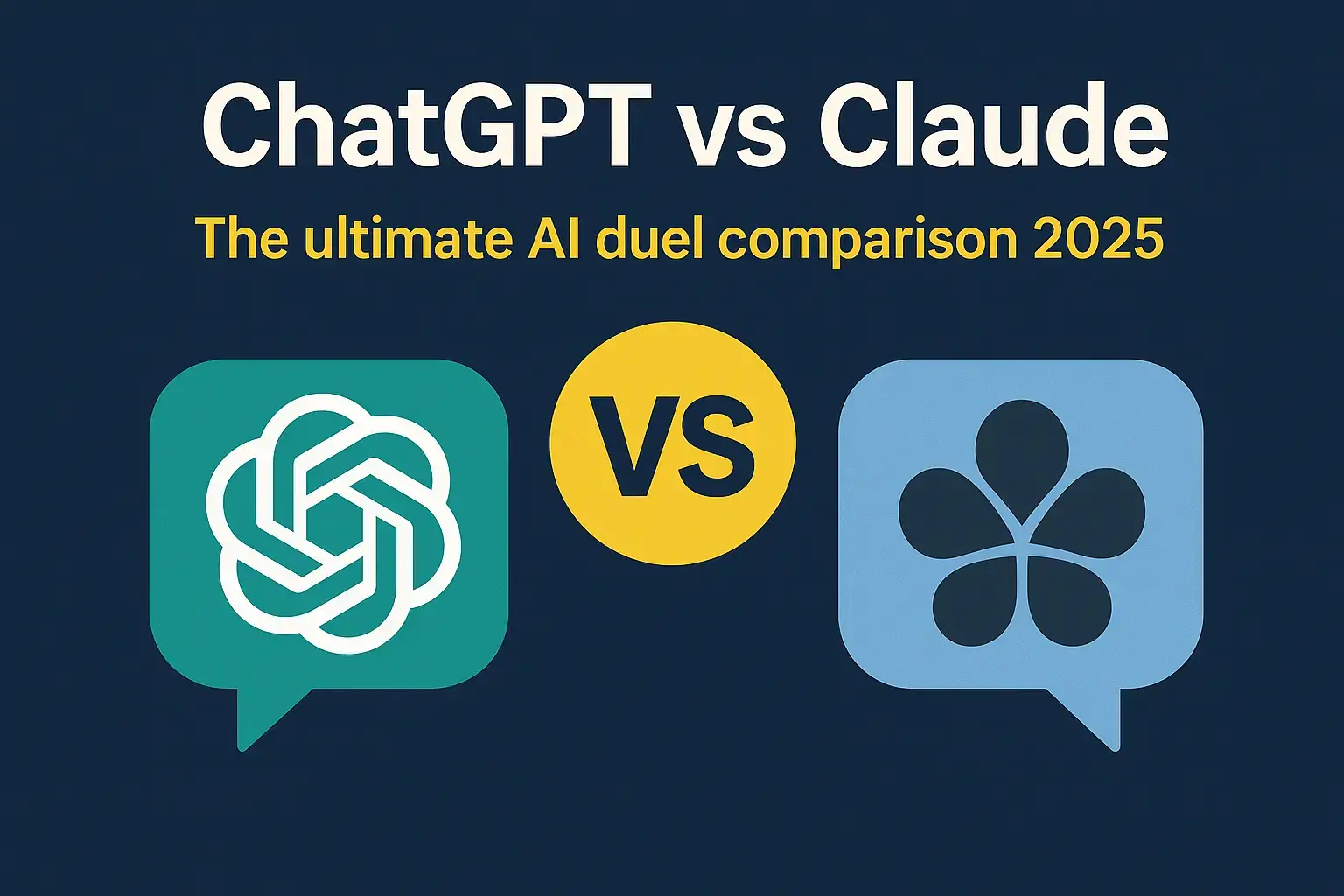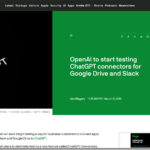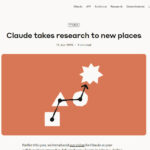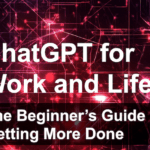ChatGPT and Claude have evolved into powerful AI assistants in 2025 that differ significantly in their core strengths. The right choice – or strategic combination – can significantly increase your productivity and optimize costs.
Comparison: ChatGPT vs. Claude
You’ve probably already asked yourself: Who will win the AI duel in 2025 – ChatGPT or Claude? If your next presentation, product campaign or business analysis depends on a responsive AI, you don’t want to use a model from yesterday. And that ‘s exactly why we provide you with radical clarity instead of marketing buzzwords.
2025 is the year in which ChatGPT and Claude have evolved so massively that their use in everyday life needs to be rethought. Whether you work as a marketing lead, growth hacker or product owner: Your choice has a direct impact on output quality, timing and budget. Suddenly, features such as 200,000 token context, live code visualization or multimodal image analysis decide whether your project takes off or stalls.
Summary and highlights:
- Claude dominates in analytical tasks with its impressive context window of 200,000 tokens, enabling the processing of complete business reports in one go – ideal for document analysis and compliance checks.
- ChatGPT offers creative versatility and is ideal for marketing content, social media and multimodal projects where both lively text and image generation are required.
- The pricing structure differs significantly, with ChatGPT offering API costs that are around 20 percent cheaper, while Claude more often struggles with availability issues – a hidden cost factor for time-critical projects.
- A hybrid strategy maximizes ROI by using Claude for in-depth research and document analysis and ChatGPT for creative tasks, which can reduce overall costs by up to 40 percent.
- In the ethics and security space, Claude relies on Constitutional AI with a more conservative approach, while ChatGPT offers more flexible guardrails – the choice should depend on the risk profile of your use case.
What can you expect in a direct duel?
- Concrete practical tests: Which AI really solves analytical or creative tasks better?
- Current price structure and reliability: How much does each answer cost you – and how many minutes do you lose due to system failures?
- Hands-on workflows: How do you combine both systems for maximum workflow boost?
We use real use cases to show you which AI approach will get the most out of you – from content creation to compliance checks. No speculation, just our tested, immediately implementable experience – guaranteed without technical jargon. Want to know where Claude suddenly reads all reports in one go – and ChatGPT promptly builds a viral campaign? Then join the duel that will take your daily AI routine to a new level. Let’s analyze, compare and prompt together – and make smarter decisions in the end.
.
Result: ChatGPT vs. Claude
| Criterion | Claude | ChatGPT | Winner |
|---|---|---|---|
| Core Strengths | Analytical tasks, document analysis, compliance checks | Creative versatility, marketing content, social media, multimodal projects | Claude / ChatGPT (depending on task) |
| Context Window (Tokens) | Up to 200,000 tokens (approx. 150,000 words) | About 8,000 words (context limit significantly lower) | Claude |
| Reasoning & Problem Solving | Structured, systematic thinking, strong chains of reasoning | Creative problem solving, faster in math/logic but more errors | Claude |
| Pricing Structure (API Costs) | About $3/million input tokens, $15/million output tokens; Pro plan approx. €18/month | About $2.50/million input tokens, $10/million output tokens; Plus plan approx. €20/month (unlimited use) | ChatGPT |
| Availability & Stability | More frequent overloads, especially during peak times | More stable availability with rare bottlenecks | ChatGPT |
| Ethics & Safety | Constitutional AI with more conservative approach, stricter on borderline requests | Flexible guardrails, more creative solutions within safety guidelines | Draw |
| Multimodal Capabilities | Analysis of complex screenshots, OCR quality, diagrams to structured data | Image generation (DALL-E) and analysis combined | ChatGPT |
| Code Generation & Live Visualization | Artifacts feature for live code visualization, strong in longer debugging sessions | Code interpreter, web integration, fast & flexible | Claude |
| Data Protection & Compliance | GDPR-certified data processing, stricter data separation | GDPR-compliant, more flexible Single Sign-On options | Draw |
| Recommended Use Cases | Compliance content, extensive document analysis, technical depth | Creative content creation, marketing, social media, data-driven visualizations | Claude / ChatGPT (depending on task) |
| ROI & Hybrid Strategy | Ideal for research and compliance | Ideal for creative and volume-intensive tasks | Hybrid |
What’s new in 2025: an overview of the current versions
The year 2025 brings decisive developments for both AI systems that you can use immediately for your projects. The latest models offer dramatically improved performance with fairer price structures.
GPT-4o and GPT-5: The ChatGPT Evolution
OpenAI massively reduced the latency in 2025. GPT-4o and its successor models respond up to 60 percent faster than their predecessors without sacrificing quality.
New ChatGPT features 2025:
- Enhanced multimodal capabilities with improved image analysis
- Real-time web browsing available in all tariffs
- Custom GPTs Marketplace with over 3 million specialized assistants
- API costs reduced by an average of 25 percent
Claude 3.5 to 4: The Context Champion
Anthropic sets new standards in context processing in 2025. Claude can now process up to 200,000 tokens in a single conversation – the equivalent of around 150,000 German words or an entire annual report.
Claude innovations 2025:
- Artifacts feature for live code visualization
- Constitutional AI 2.0 with even more precise security mechanisms
- Improved reasoning capabilities for mathematical problems
- Enterprise APIs with GDPR-certified data processing
Practical version check
💡 Tip: Test the current capabilities of both systems with an identical complex prompt. The differences in quality have become clearer in 2025 – Claude dominates in analytical tasks, while ChatGPT is ahead in creative projects.
API availability has stabilized, although Claude is still more frequently overloaded than ChatGPT.
Core strengths in a direct duel
The two AI giants show clear specializations: Claude dominates in analytical tasks, while ChatGPT impresses with its creative versatility. Here you can see where each system shows its true strengths.
Context processing: Who keeps track of things for longer?
Claude processes up to 200,000 tokens in one run – that’s the equivalent of around 150,000 German words. In practical terms, this means that you can upload complete business reports, contracts or technical documentation and Claude will keep track of all the details.
ChatGPT achieves significantly lower context limits and increasingly loses the thread in longer conversations. From around 8,000 words, important information starts to disappear from the first few entries.
💡 Tip: Claude is the much better choice for document analyses over 20 pages.
Reasoning & problem solving: the intelligence check
Claude demonstrates structured thinking, especially when it comes to multi-stage problem solving. The system systematically thinks through complex scenarios and provides comprehensible chains of reasoning.
ChatGPT scores with its creative problem-solving approaches and regularly finds unconventional ways to solve problems. It works faster in mathematical tasks and logic puzzles, but makes more frequent errors in complex calculations.
Practical difference: Claude is suitable for compliance checks and risk analyses, ChatGPT for brainstorming and creative strategy development.
Creativity vs. precision: two different approaches
Claude produces structured, neutral texts – perfect for business communication or legal documents. The writing style remains consistently professional and compliance-ready.
ChatGPT develops lively, conversational texts with variable tonality. Ideal for marketing content, social media and creative projects where personality is required.
Copy & paste prompt for style tests:
Explain [your topic] once formally for executives and once loosely for social media. Compare both versions.
Claude gives you precise professionalism, ChatGPT creative flexibility – the right choice for maximum efficiency depending on the use case.
Multimodal capabilities: More than just text
In 2025, the battle between ChatGPT and Claude will no longer be won with text alone. Both AI systems have massively expanded their multimodal superpowers – but with completely different focuses.
Image analysis and processing
Claude dominates when it comes to analyzing complex screenshots. The system not only recognizes text elements in images, but also understands layout structures and enables diagrams to be converted into structured data.
Claude is particularly strong at analyzing:
- Business documents with tables and graphics
- Code screenshots with precise syntax recognition
- Compliance-relevant documents with OCR quality
ChatGPT scores with its combination of creation and analysis. While Claude only interprets, ChatGPT uses DALL-E to simultaneously generate images and analyze existing ones – a decisive workflow advantage for marketing teams.
Code generation and technical tasks
Claude’s Artifacts feature revolutionizes live programming. You see your code executed in real time – perfect for front-end development and prototyping. Changes are visualized immediately, without external tools.
ChatGPT counters with its seamless web integration. The code interpreter not only allows you to program, but also to pull data from the Internet and process it directly – ideal for data-driven projects.
💡 Tip: For complex debugging sessions, Claude leads the way thanks to its 200,000 token capacity. ChatGPT increasingly loses context during longer code reviews.
Performance comparison for developers
API integration, ChatGPT clearly wins – availability is more stable and the pricing structure is more transparent. Claude still struggles with overload problems at peak times.
In terms of pure code quality for complex tasks, Claude is ahead, while ChatGPT shines when it comes to creative solutions and fast prototypes.
The decision depends on your workflow: Do you need precise analysis and structure? Claude. Do you want to experiment quickly and combine different media formats? ChatGPT.
Ethics and security: Who protects better?
The security concepts of Claude and ChatGPT are fundamentally different – with direct implications for your business operations.
Constitutional AI vs. standard guardrails
Claude relies on Constitutional AI – a system that evaluates AI responses based on a “constitution” of ethical principles. Anthropic trains the model to recognize what is problematic itself instead of relying solely on external filters.
ChatGPT uses multi-layered moderation: pre-training filters, real-time monitoring and post-processing checks ensure security. OpenAI adapts these guardrails more flexibly to different use cases.
The practical difference: Claude rejects borderline requests more frequently, ChatGPT finds creative solutions within the security guidelines more often.
Bias tests show different strengths
Independent studies show that Claude produces fewer stereotypical responses for sensitive topics, while ChatGPT scores highly for cultural diversity. Both systems still show weaknesses when it comes to complex socio-political issues.
Data protection and GDPR compliance
Both providers meet basic GDPR requirements:
- Data processing in accordance with Article 28 GDPR
- Deletion rights for chat histories
- Opt-out for training data available
- EU server locations in planning
Enterprise features differ significantly: Claude offers stricter data separation guarantees, ChatGPT scores with more flexible single sign-on options and team management tools
Insurance-related liability risks
As a company, you remain legally responsible for AI-generated content. However, Claude’s Constitutional AI reduces the risk of problematic outputs, which liability insurers are increasingly recognizing. ChatGPT’s greater prevalence means more precedents for legal certainty.
Both systems offer solid security standards – Claude protects more conservatively, ChatGPT more flexibly. Your choice should depend on the risk profile of your use case.
Cost-benefit analysis: What does which service cost?
The costs between ChatGPT and Claude differ considerably – not only in terms of the basic price, but also in terms of hidden expenses. Depending on your usage pattern, your choice can save or cost hundreds of euros per month.
API costs per token and request
Claude 3.5 Sonnet costs around 3 dollars per million input tokens and 15 dollars per million output tokens via the Anthropic API. ChatGPT GPT-4o is around 2.50 dollars input and 10 dollars output – around 20 percent cheaper with comparable performance.
For business applications, the differences are more dramatic:
- Analyzing long documents: Claude costs about 15 cents per analysis for 50,000-token documents, ChatGPT about 12 cents
- Short chat interactions: ChatGPT Plus (20 euros per month) offers unlimited use, Claude Pro costs 18 euros with stricter limits
- API automation: ChatGPT’s lower token prices add up considerably with scaled workflows
Availability as a hidden cost factor
Claude suffers from frequent overloads, especially during European business hours. These outages can mean expensive delays for time-critical projects.
ChatGPT offers more stable availability with different speed levels. GPT-3.5 practically always runs, GPT-4o has rare peak-time bottlenecks.
ROI calculator for your situation
💡 Tip: Calculate both models over a month with your typical tasks. Claude is worthwhile for complex individual analyses, ChatGPT for high volumes and creative tasks.
The real costs arise from productivity losses in the event of system failures and suboptimal tool selection for specific tasks.
Practical scenarios: When to choose which tool?
The right choice of AI depends on your specific task. We show you when Claude and when ChatGPT is the better solution.
Marketing and content creation
ChatGPT dominates creative campaigns with its natural, conversational texts. For social media posts, blog posts or advertising slogans, it delivers spontaneous, catchy formulations.
Claude excels with compliance content such as data protection declarations or legally compliant product descriptions. His structured approach significantly reduces legal risks.
- Social media: ChatGPT for viral hooks and storytelling
- Corporate communications: Claude for precise, professional tone of voice
- Newsletters: ChatGPT for a personal touch, Claude for factual content
💡 Tip: Test both with identical briefings – the results differ drastically in style and structure.
Business intelligence and analysis
Claude’s Context advantage is evident when analyzing extensive reports or multi-page contracts. Its 200,000-token capacity keeps track of even 50-page documents.
ChatGPT scores highly in data interpretation thanks to its intuitive visualizations and comprehensible preparation of complex figures for presentations.
- Analyze quarterly reports: Claude for complete document evaluation
- Risk assessment: Claude for structured, compliance-compliant analyses
- Dashboard creation: ChatGPT for user-friendly data visualization
Development and technology
Code reviews benefit from Claude’s precision, especially for safety-critical applications. ChatGPT excels at creating user-friendly documentation and quick fixes.
Claude is better atdebugging complex systems through systematic reasoning. ChatGPT supports more effectively in communicating technical concepts to non-developers.
Both tools complement each other perfectly: Claude for technical depth, ChatGPT for creative problem solving and comprehensible explanations.
Hybrid strategies: Combining both tools optimally
The smartest solution for professional AI use is not the choice between ChatGPT and Claude, but their strategic combination. Companies that use both systems in parallel demonstrably achieve better results in complex projects.
Workflow integration
Division of labor according to strengths maximizes efficiency: Claude handles the in-depth research and analysis of complex documents, while ChatGPT handles the creative and communicative tasks.
A typical content workflow looks like this:
- Phase 1: Claude analyzes market data, customer feedback and compliance requirements
- Phase 2: ChatGPT develops creative campaign concepts based on Claude’s insights
- Phase 3: Claude checks the content for legal compliance and factual accuracy
💡 Tip: Use API orchestration for automated processes. Tools such as Zapier or Make can seamlessly link both AI systems.
Enterprise implementation
Change management requires a clear separation of roles: marketing teams work primarily with ChatGPT for creative content, while compliance and legal rely on Claude’s structured analysis.
Successful onboarding strategies include:
- Department-specific training with practical use cases
- Governance framework with defined responsibilities per tool
- Compliance guidelines for GDPR-compliant multi-AI use
Legal framework conditions require special attention: each tool requires separate data protection impact assessments and liability issues must be clearly regulated
This hybrid strategy reduces costs by up to forty percent compared to the exclusive use of premium APIs and at the same time significantly increases output quality.
Conclusion
The AI landscape in 2025 shows a clear division of labor: Claude dominates in deep analytical tasks, while ChatGPT impresses with its creative versatility. Your choice doesn’t have to be exclusive – the smartest companies use both systems strategically.
The most important takeaways for your AI strategy:
- For complex document analysis and compliance: Claude’s 200,000-token capacity beats ChatGPT hands down
- For marketing content and creative projects: ChatGPT delivers more natural, engaging copy
- For cost efficiency: ChatGPT is about 20% cheaper with comparable performance
- For availability: ChatGPT offers more stable uptime, especially during European business hours
- For hybrid workflows: The combination of both tools increases output quality by up to 40%
Your next steps:
Test both systems for a week with your typical tasks. Start with free accounts and document which tool delivers better results for which tasks.
💡 Tip: Start with a simple A/B test – set both AI systems identical tasks from your everyday work and compare the quality, speed and usability of the results.
The AI revolution is happening now, not tomorrow. Anyone still standing on the sidelines in 2025 will be losing productivity advantages to the competition every day.
